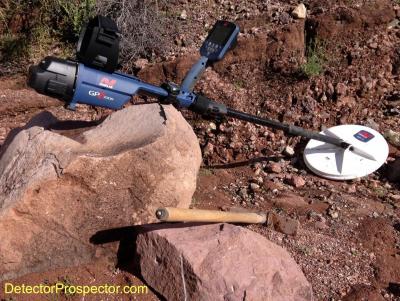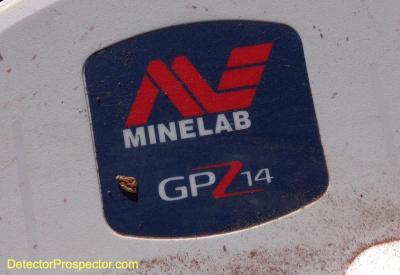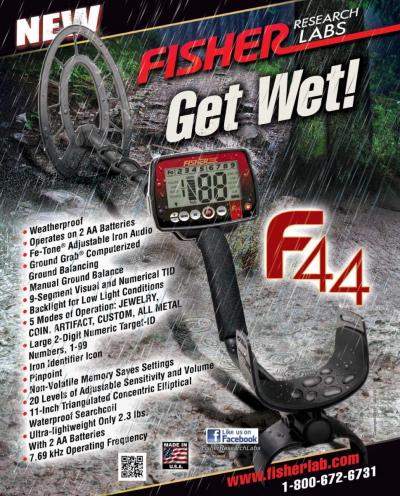-
Posts
19,759 -
Joined
Content Type
Forums
Detector Prospector Home
Detector Database
Downloads
Everything posted by Steve Herschbach
-

One Brain Cell Working AKA Deus Chronicles
Steve Herschbach replied to goldbrick's topic in XP Metal Detectors
Hi Merton, As you know I did not keep mine long, but it ran smooth enough for me in the Goldfields program, and in heavy magnetite laden ground in two locations. Pretty much on par with the Gold Bug Pro I had at the time. -

High-trash Area Prospecting VLF Or PI
Steve Herschbach replied to karathound's topic in Metal Detector Advice & Comparisons
Hi karathound, Since you already have a MXT that is the obvious first choice. Give it a go - it is a capable machine. The problem of course is hot red ground, or any really bad ground conditions. VLF detectors struggle under those conditions and so any choice is going to be problematic. In milder ground VLFs come into their own. The CTX question here is a bit of a red herring, as you have stated you have no need of a multi-use machine, and I assume especially not a very expensive and heavy one. I do have a CTX and frankly I would grab a single frequency unit first. That said I think characterizing the CTX as useless for the application is harsh in that some people are indeed having success with them. I am sure I could go find gold with mine. Mid-frequency VLF units are very competitive and most will do the job if you learn them. The Nokta and Racer I have concerns in the absolute worst ground as they exhibit a tendency as extremely high gain units to go into continual overload in such situations. I am trying to gather more data on that myself and have been watching the posts by Narrawa in Oz with great interest for the same reason. I am waiting still on the new Gold Racer with high hopes but it remains to be seen how that pans out. The Gold Bug Pro and the new variant, the F19, are very capable units, and a bit of a knee jerk recommendation on my part due to the proven success worldwide of that particular circuit. Though they struggle like all VLFs in severe ground. Leaving it at the MXT for now I do ask myself what single VLF out of all I have which one I would keep for gold prospecting if I could keep only one. Other detectors have come and gone over the years, but there is only one model I have owned and used consistently since the day it came out about 20 years ago. That would be my Fisher Gold Bug 2. Not the deepest by far, but it has a very effective iron disc circuit. Better yet, it is a dedicated gold unit that still easily hits gold not PI can touch, even the SDC 2300. Mine worked so well in Oz I left it in the hands of a new member of the Gold Bug 2 fan club, Jonathan Porter. The MXT is capable, and you already own it. Unbeatable combination I think. Good luck!! -

Minelab Video - GPZ 7000 Ground Type
Steve Herschbach replied to Steve Herschbach's topic in Minelab Metal Detectors
Obviously the Gold Modes are causing far more questions for people than the Ground Type setting. My only note here is to say I have been finding the Normal/High Yield combination quite possible at various locations in California and Nevada, typically where there are lighter colored soils. Some areas it is a total no-go but in the U.S. at least be sure and do not fall into the habit of always using the Difficult setting. Give Normal a try, and go back to Difficult if need be. The sensitivity to small items gives the SDC 2300 a serious run for the money, even with the larger coil, while delivering more depth on larger nuggets. A nice summary explanation of how the ground modes may work by Goldhound at http://golddetecting.4umer.net/t21336-link-showing-a-minelab-vid-gpz-7000-gold-mode#207316 -
Dealing with aging relatives and illness is a difficult situation. I am glad you got out and enjoyed yourself. A really great story and adventure - thanks for sharing!
-
Thanks guys but the gold is something I probably would not normally mention. I just liked the photo of the GPZ - good contrast and lighting, and needed an excuse to post it.
-

Minelab Video - GPZ 7000 Gold Mode
Steve Herschbach replied to Steve Herschbach's topic in Minelab Metal Detectors
The main problem is trying to equate the weight of a nugget with the time constant of a nugget. People want to think in terms of weight ranges when metal detectors do not detect weight. The correlation between time constant and weight is loose at best. A large specimen with ounces of dispersed low purity gold will be much harder to detect than a solid lump of purer gold weighing half as much. -

Minelab Go Find Metal Detector
Steve Herschbach replied to Sourdough Scott's topic in Minelab Metal Detectors
These detectors do not replace the X-Terra models. They are entry level detectors positioned below the X-Terra models in the unit lineup. Notice how in the last year Minelab has not replaced models, but filled or created new price points. -
When Chris and I were at the Mesa show last month Jim P took us out to Little San Domingo one day for a few hours. I only got this one little nugget but was happy to find my first nugget at LSD. We visited with Kevin Hoagland at Gold Basin after that, again for only a few hours, and I snagged my first Gold Basin nugget. They can go next to my couple little nuggets from Rye Patch. Not much gold but kind of rounded the bases with the GPZ anyway and had a good time doing it.
-

The Passing of a Metal Detecting Great!
Steve Herschbach replied to delnorter's topic in Garrett Metal Detectors
Truly one of the pioneers of metal detecting and an early leader in nugget detectors. The 15 kHz Garrett Groundhog found huge amounts of gold in the early days. I don't know if anyone from Garrett follows the forum but my condolences to the family. -
They probably think I am nuts. Not too many people I know would argue with that. It is all what you are used to. I visited Native villages in Alaska when it was -20F or colder which I think is cold, and they would go out and about in windbreakers. I am acclimating quickly. Chris and I were in Winnemucca last fall detecting, and it started snowing. I decided then and there no more freezing while detecting and whined (whinged) about the cold all the way home to Reno.
-

Minelab Video - GPZ 7000 Gold Mode
Steve Herschbach replied to Steve Herschbach's topic in Minelab Metal Detectors
Thanks is JP, the engineers and physicists! are the unsung heroes of the industry. I would rather spend time chatting with them about the GPZ than most anyone else. They really understand what is going on under the hood. I hope Minelab keeps them in front of the camera. -
I thought the ATX at 6.9 lbs was a real pig until I got my 7.3 lb GPZ. Now I know what a real pig is! GPZ is now Big Piggy and ATX Little Piggy. Or maybe the GPZ should better be called Boss Hog! They both like to root in the dirt.
-
"When the later Minelab PI's came along the threshold stability improved to a stage where the UFO style mono coils were too damned noisy and were sold off to people with older machines." That is exactly what happened to me. Loved that UFO on my SD2200, found pounds of gold with it. It got all noisy on me when I got to the GPX and I sold it along with the SD2200 to my brother, who still has it.
-

Converting Minelab GPX to DEUS Rod Assembly
Steve Herschbach replied to Steve Herschbach's topic in Minelab Metal Detectors
So true!! But moving the box on a rod is a far cry from doing surgery on the guts. And easily reversible. -

Minelab Video - GPZ 7000 Gold Mode
Steve Herschbach replied to Steve Herschbach's topic in Minelab Metal Detectors
I tried to explain it but I guess I did not make it clear. The GPZ is not going "up to" 40% deeper than itself when you switch to Extra Deep. It is going "up to" 40% deeper than a GPX 5000 under very rare circumstances involving extremely mineralized ground and very large gold nuggets. Russ, kind of cruel sticking Minelab engineers in front of the camera. They are probably wondering where that was in the job description. I also wish for the JP version, but the engineers are more fun to talk to in some ways. They see things from an entirely different perspective. Really smart guys but not prospectors. It is not very mysterious. Extra Deep is a mode for dealing with very bad ground while trying to find very large gold nuggets. In almost any other circumstances it is going to lose depth, not gain it. PI performance is relative to mineralization. Modes that improve performance in bad ground can cost you performance in milder soils. At the end of the day naming it Extra Deep was a bad idea. It is however hard to name it anything in fact as any word or two is misleading. I tend to think of it as "Long Time Constant" mode myself. Then the 40% thing in the brochure (but not in the white paper) really messes with people. Everyone forgets the "up to". That is marketing fuzzy speak and from my perspective essentially meaningless. It is like EPA mileage figures "your performance may vary." -

Minelab Video - GPZ 7000 Gold Mode
Steve Herschbach replied to Steve Herschbach's topic in Minelab Metal Detectors
Did you catch in the video where they said High Yield for nuggets 1 oz and smaller? The fact is it is a very, very fuzzy target trying to set size ranges. Round solid lump, or prickly specimen? Gold is just too variable in nature to put in tidy categories. Nothing but trial and error will reveal what works best in different areas with different mineralization and types of gold. But at least we can make educated guesses. -
Sometimes experimentation reveals things the designers never dreamed of. Thanks Lunk, serious food for thought there.
-
Well, I am not 100% swearing the cable has nothing to do with it. I thought so myself early on but after using it for over a year it just seems like more than that. Getting coils to work well with very hot PI designs is a known issue http://www.detectorprospector.com/forum/topic/228-speculations-on-minelab-sdc-2300-and-mpf-multi-period-fast/ I just need to finish that modified ATX as that would put some real light on the issues, since the coil cable is now running straight and wrapped up well. If it was a cable thing it will be evident. Problem is I am really, really busy now so it has been hard to get back to it. Priorities shifted.
-

New Nokta Dealer in the USA!
Steve Herschbach replied to Nokta Detectors's topic in Nokta / Makro Metal Detectors
Hey Bob, did you try for the coupon they offered at the time? Squeaky wheel thing can get results. Honestly, still worth a try - Dilek does not want anybody being really unhappy. That was a huge price reduction so I do really sympathize with you on it. -
Hello Dean, Welcome to the forum! I am of course a fan of the ATX. I agree with Sandy - I think the falsing is inherent in the coil due to the short delay time being invoked to increased sensitivity to small gold. The problem can be addressed through design - I know a lot of effort is expended by Minelab to get coils running quiet. Part of the issue is running the machine maxed out. I run at the highest sensitivity setting on the machine. Lowering it reduces falsing but reduces sensitivity. So you can choose to alleviate the issue somewhat by running cooler. Coil scuff covers also help by acting as a buffer to knocks and sharp hits. It is worse on loose rocks and rubble and not bad at all if a bit of grass or weeds acts as a buffer. I find the ATX runs perfectly in grasslands. Myself I have basically just learned to handle the machine in such a way to reduce the issue, which means just going really slow and taking it easy in the rocks. Not a bad habit to conform to anyway. When I finish this modification I swear I am never heading down that road again. It is its own sort of fun but really I just want to go detecting. There probably are people who would do mods like this for a fee. I am sure Paul will chime in with ideas.
-
Great snake photo Fred. Glad your new detector is working good. If you are willing to share a new thread with any observations or tips on your hot rock experiences would be appreciated I am sure.
-
There currently is no import/export function and it is absolutely the number one thing limiting the usefulness of XChange and the GPS system as a whole. That said I think I may be able to hack the system via a script. Hacks already exist for the CTX 3030 that can be applied to the GPZ 7000 but they are not something just anybody can do. Anyone interested can find details at Access and Export XChange Data and Direct GPS Track Data Extraction. I have used this information myself to import and export data from the GPZ to Google Earth and from my Garmin system. An issue related to this is using two computers. Let's say I use a home computer for most work with XChange and use it as the main data repository. Now I take a laptop onto the field, and because the GPZ fills up to the max with data I dump it all to XChange on the laptop and erase the GPZ. Now I have some data on the laptop and some on the home PC. How do I get it all onto the main PC? An export/import function makes that easy. And of course makes it easy to use with other programs or Google Earth. I currently use a USB stick to store a master copy of the XChange file and move it from my laptop to my PC and back as needed, which is cumbersome. I honestly do not see people really getting fully on board with this until an export/import function is implemented. Since this could serve both the CTX and GPZ user base a simple hack via a script might be worth a few bucks to the person that develops it.
-
My own inquiry to Minelab got this response: "MINELAB, OR ANYONE ELSE, CANNOT SEE OR ACCESS ANYONE’S DATA, IT IS NOT STORED IN THE CLOUD, IT IS ONLY STORED ON YOUR DETECTOR AND PC (WHEN UPLOADED)."
-

Converting Minelab GPX to DEUS Rod Assembly
Steve Herschbach replied to Steve Herschbach's topic in Minelab Metal Detectors
Well, heck, posting this just cost me $264! Got the rod assembly on the way - stand by for Gold Bug 2 conversion.



